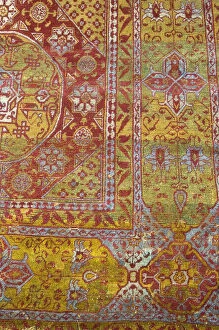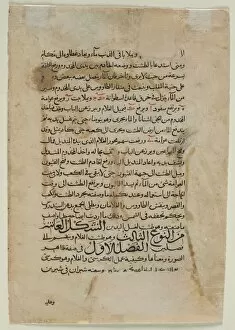Mamluk Period Collection
The Mamluk period, spanning from 1250 to 1517, was a time of great artistic and cultural achievements in Egypt
All Professionally Made to Order for Quick Shipping
The Mamluk period, spanning from 1250 to 1517, was a time of great artistic and cultural achievements in Egypt. This captivating era is beautifully represented by various artifacts that have survived through the centuries. One such artifact is the Peacock-shaped Hand Washing Device, which showcases the intricate craftsmanship of this period. Its elegant design and attention to detail reflect the sophistication and refinement of Mamluk artistry. On its verso side, we find a Text Page written in Arabic prose, offering us a glimpse into the literary treasures produced during this time. Another remarkable piece from this period is a Qur'an leaf written in Muhaqqaq script. Created around A. H. 728 / A. D. 1327 by an unknown artist, it exemplifies the mastery of calligraphy during the Mamluk era. The meticulous strokes and harmonious composition make it not only a religious text but also an exquisite work of art. Carpet weaving was another significant aspect of Mamluk culture, as demonstrated by two carpets from different periods within this era: one dating back to the early 16th century and another originating from late 15th/early 16th century Egypt. These carpets showcase elaborate patterns and vibrant colors that were characteristic of Mamluk carpet production. Furthermore, we encounter various fragments that provide insights into different aspects of daily life during this period. An intricately designed Border fragment offers glimpses into architectural ornamentation prevalent at that time while textile fragments like scarves or headdresses reveal fashion trends popular among both men and women. A Band fragment displays geometric motifs often found in decorative arts throughout Islamic history while another Border fragment showcases delicate floral patterns reminiscent of nature's beauty. Lastly, we come across a Fragment created during the Ayyubid-Mamluk transition phase in Egypt's history (1171-1517). It serves as evidence for how artistic styles evolved over time under changing political circumstances.














